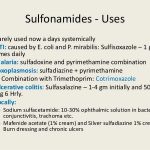
Sulfonamides, synthetic derivatives of p-aminobenzenesulfonamide (sulfanilamide), are classified as anti-infectives if they possess antibacterial activity that is antagonized by p-aminobenzoic acid or p-aminobenzoyl glutamic acid.
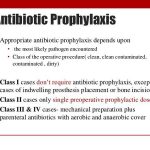
Lomefloxacin is used orally in adults for the treatment of mild to moderate lower respiratory tract infections (acute bacterial exacerbations of chronic bronchitis) and uncomplicated or complicated urinary tract infections caused by susceptible organisms. The drug also is used orally for perioperative prophylaxis in patients undergoing transrectal prostate biopsy or transurethral surgical procedures.
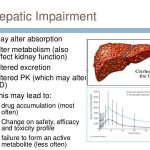
Lomefloxacin hydrochloride is administered orally. Lomefloxacin hydrochloride may be administered without regard to meals. Food decreases the rate of GI absorption of the drug, but only decreases the extent of absorption by 12%. Dosage of lomefloxacin, which is available for oral use as the hydrochloride, is expressed in terms of lomefloxacin.
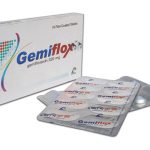
Gemifloxacin is used for the treatment of acute bacterial exacerbation of chronic bronchitis caused by susceptible strains of Streptococcus pneumoniae, Haemophilus influenzae, H. parainfluenzae, or Moraxella catarrhalis. In several randomized, double-blind, active-controlled studies in patients with acute exacerbation of chronic bronchitis, clinical response (defined as sufficient improvement in or resolution of signs and symptoms at day 13-24 without further need for anti-infectives) was achieved in 86-94% of those receiving oral gemifloxacin (320 mg once daily for 5 days) and in 93, 85, or 85% of those receiving oral amoxicillin and clavulanate potassium (500 mg of amoxicillin 3 times daily for 7 days), oral clarithromycin (500 mg twice daily for 7 days), or oral levofloxacin (500 mg once daily for 7 days), respectively. In several controlled and uncontrolled studies in patients with clinically and radiographically documented CAP, clinical response was achieved in 89-92% of patients receiving oral gemifloxacin (320 mg once daily) for 7 days.

Pharmacokinetic interaction (decreased absorption of gemifloxacin). Gemifloxacin should be taken at least 2 hours before or 3 hours after antacids that contain aluminum or magnesium. (See Dosage and Administration: Administration.) Antacids containing calcium or calcium supplements have no clinically important pharmacokinetic interaction with gemifloxacin. Didanosine Pharmacokinetic interaction; didanosine chewable/dispersible buffered tablets, buffered powder for oral solution, or pediatric powder for oral solution prepared as an admixture with antacid may substantially decrease gemifloxacin absorption.

Adverse effects reported with ticarcillin disodium and clavulanate potassium are similar to those reported with ticarcillin alone. For information on adverse effects reported with ticarcillin and other extended-spectrum penicillins, see Cautions in the Extended-Spectrum Penicillins General Statement 8:12.16.16. Rash, pruritus, urticaria, and fever have been reported with ticarcillin disodium and clavulanate potassium.
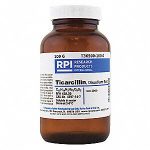
Vials of ticarcillin disodium and clavulanate potassium labeled as containing a combined potency of 3.1 g of the drugs are reconstituted by adding approximately 13 mL of sterile water for injection or sodium chloride injection to provide a solution containing approximately 200 mg of ticarcillin per mL and 6.7 mg of clavulanic acid per mL. The vial should be shaken until the drug is dissolved.
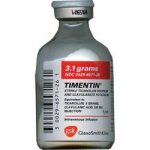
Ticarcillin disodium and clavulanate potassium is used for the treatment of lower respiratory tract infections, skin and skin structure infections, complicated and uncomplicated urinary tract infections, bone and joint infections, septicemia, intra-abdominal infections (e.g., peritonitis), and gynecologic infections (e.g., endometritis), caused by susceptible organisms.